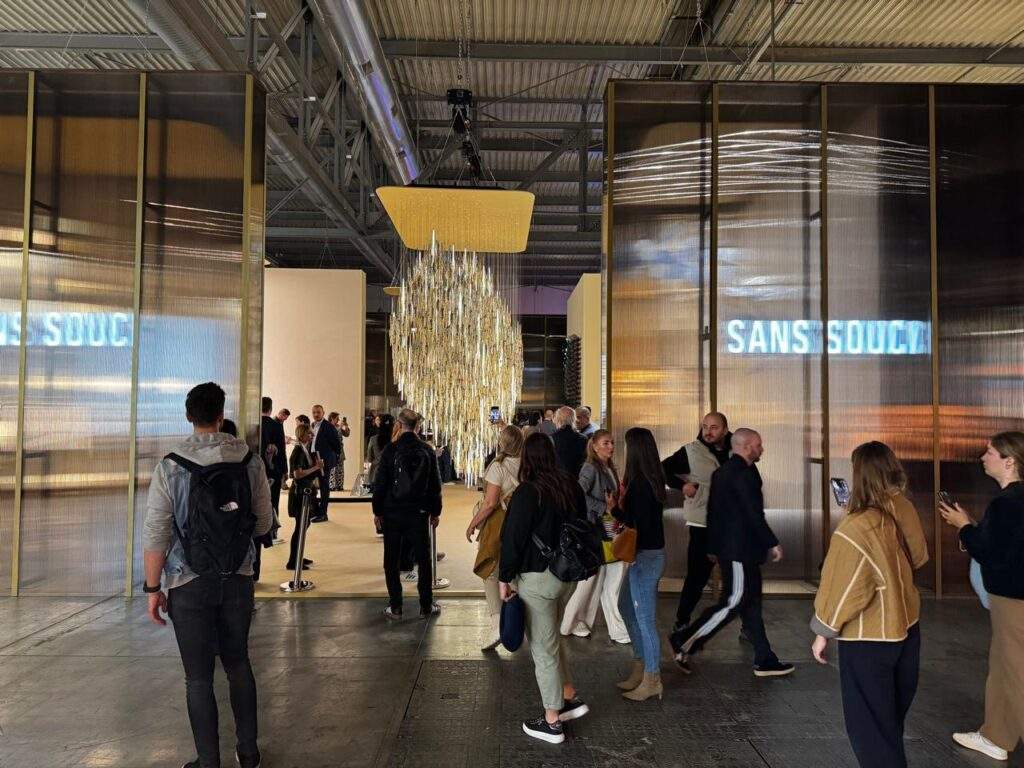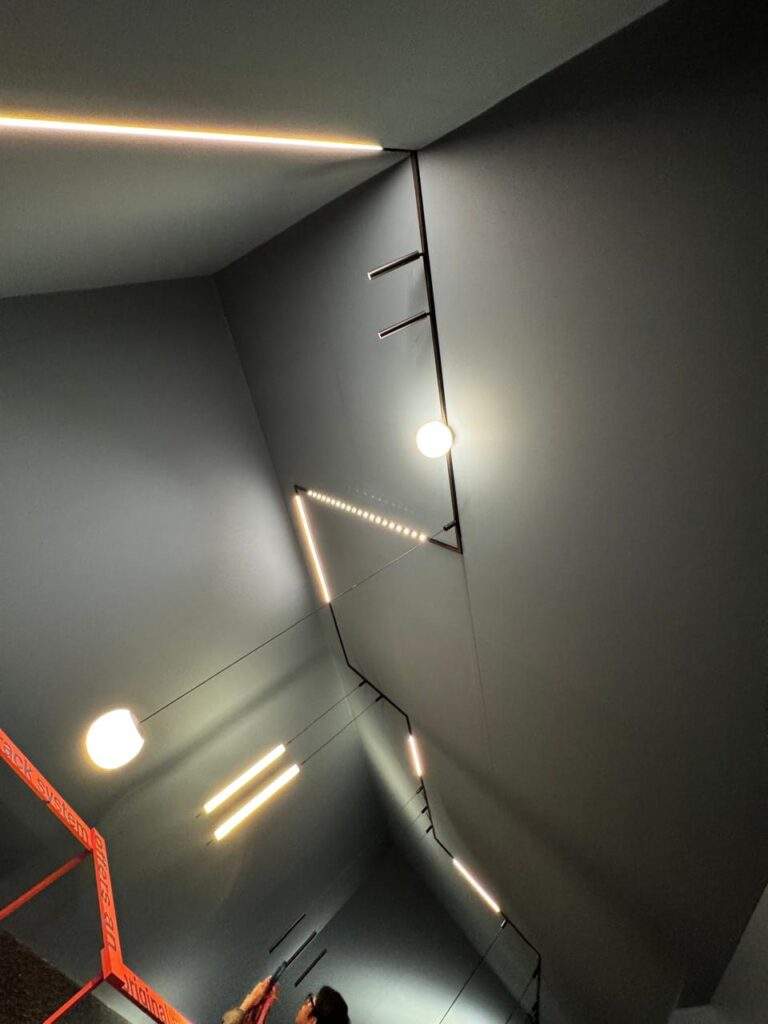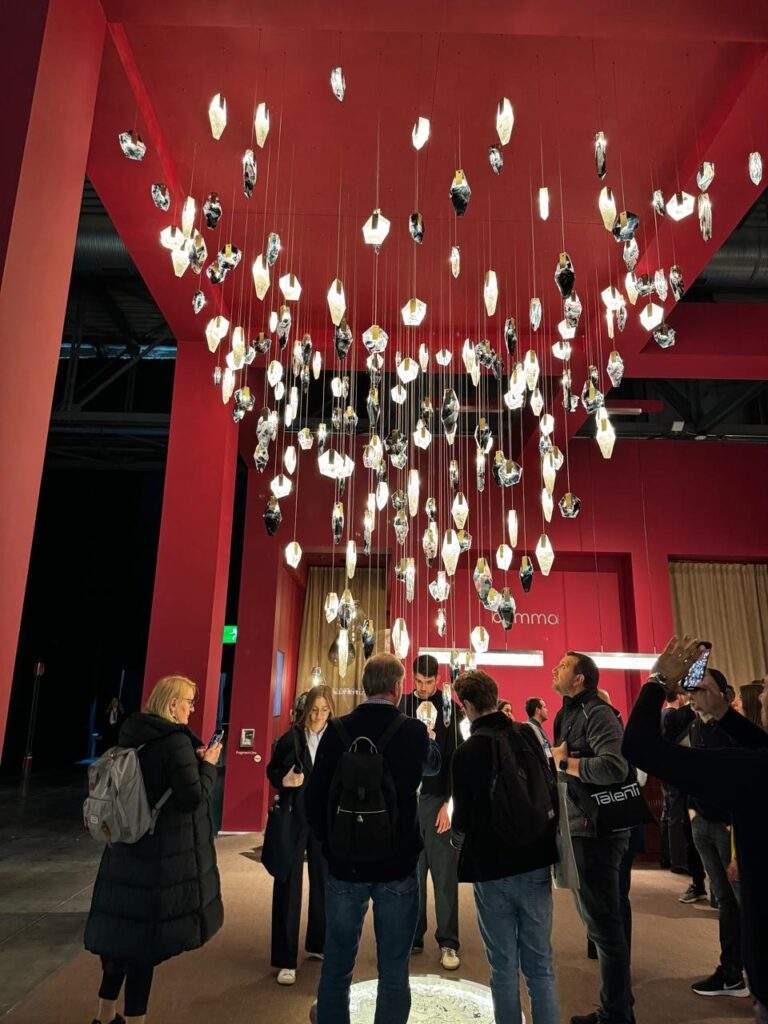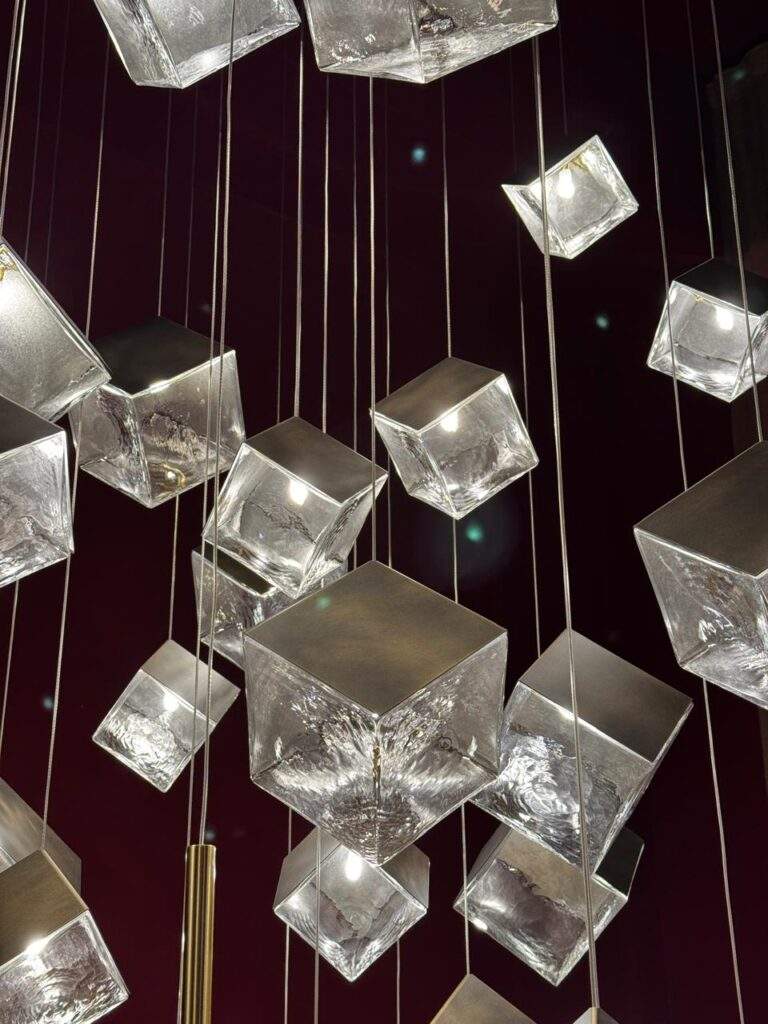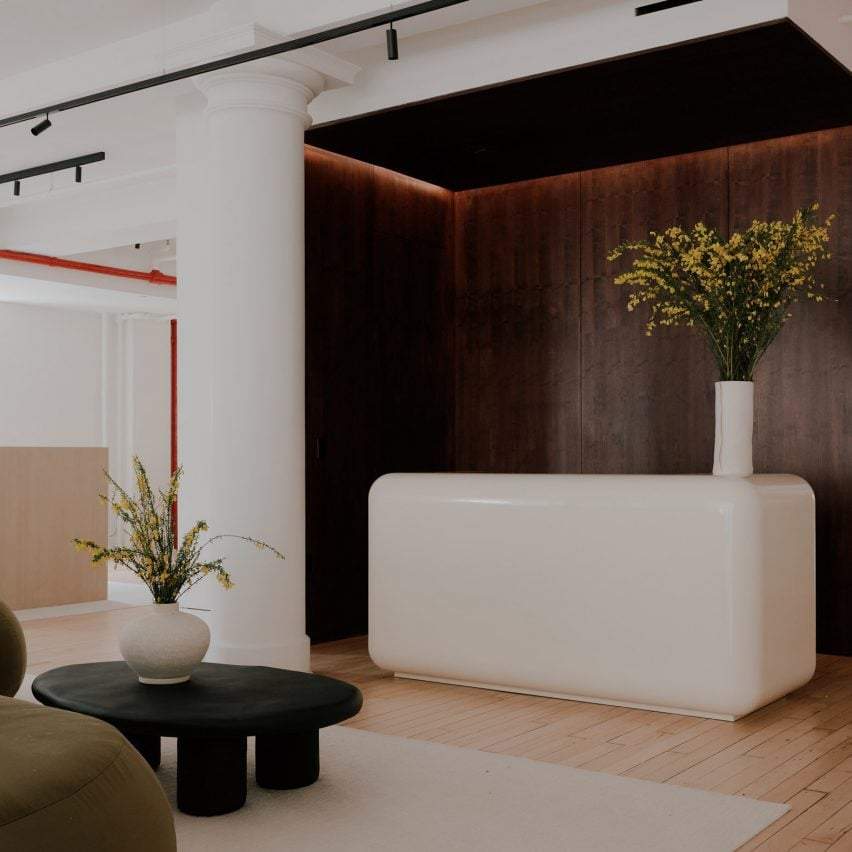In a year when design narratives are shifting toward sustainability and sensory well-being, the lighting sector at Salone del Mobile 2025 took on a quieter, more introspective tone.
While few radical form innovations were on display, the real transformation was philosophical: How light is produced, how it’s perceived, and how it affects human experience.

Subtle Forms, Smarter Light
At first glance, many lighting installations at Euroluce, the biennial lighting exhibition held within Salone, felt familiar—pendants, sconces, and modular systems.
But a closer look revealed an evolving logic in technology, energy efficiency, and material transparency.
Most notably, several leading manufacturers have doubled down on phosphor-converted LED systems.
These newer generations of LEDs use phosphor coatings to diffuse light in warmer, more natural tones, addressing the longstanding critique of harsh, cold LED outputs.
Companies like Artemide, Flos, and Vibia are pioneering fixtures that blend advanced optics with a warm, low-glare experience.
This shift isn’t purely technical—it’s emotional. Designers are increasingly factoring in visual comfort, circadian rhythm awareness, and the psychological effects of color temperature.

Public Dialogues and Workshops
For the first time, the lighting section hosted open seminars and workshops aimed at both industry insiders and curious visitors.
Organized in part by ADI (Associazione per il Disegno Industriale) and ISELED Alliance, key sessions included:
“Human-Centric Lighting and the Visual Field” — exploring eye fatigue, visual ergonomics, and the safe spectrum for residential and workplace use.
“New Materialities in Optical Design” — highlighting sustainable diffuser materials such as biosilicates, recycled PMMA, and nanostructured surfaces that modulate light without high energy costs.
“Lighting the Net Zero Future” — a session on energy-efficient manufacturing processes and lifecycle carbon accounting in lighting product design.
Presenters from institutions like Politecnico di Milano and ETH Zurich brought academic rigor to the fair’s hands-on aesthetic.
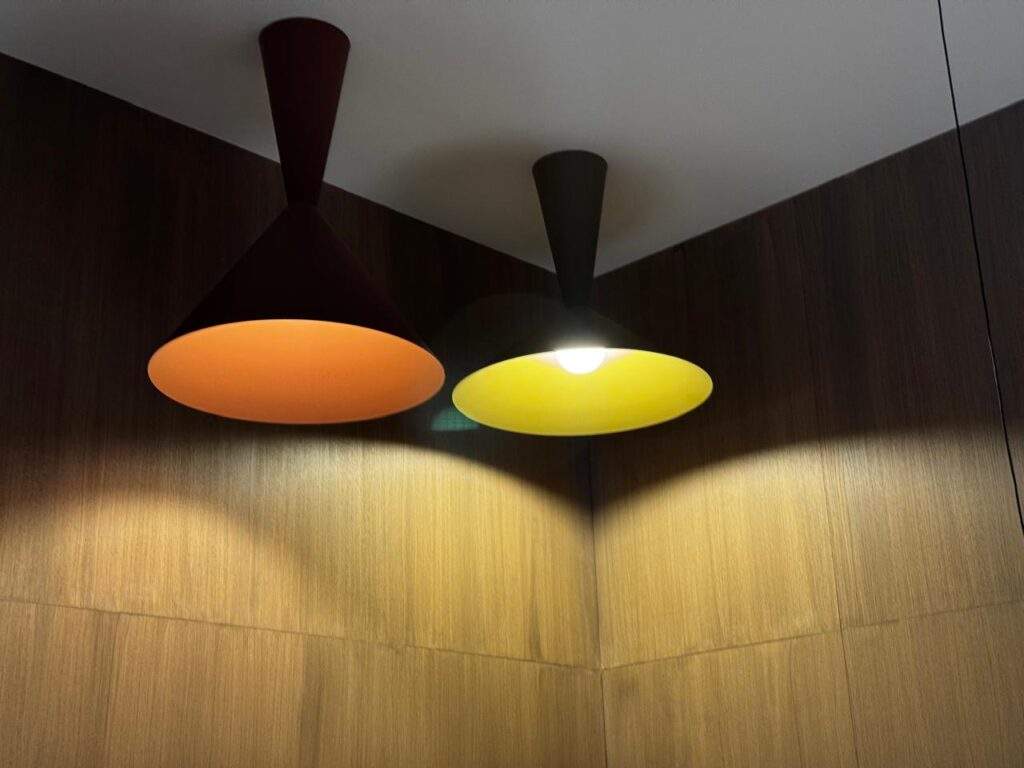
Luxury Light: Crystals and Craftsmanship
While much of the conversation centered on function and sustainability, luxury lighting carved its own stage through opulence and refinement.
Brands like Preciosa Lighting, Baccarat, and Lalique turned the spotlight onto crystal craftsmanship, showcasing bespoke chandeliers, interactive prisms, and LED-integrated crystal surfaces.
These were not merely decorative pieces—they represented an intersection of traditional handcraft and smart design.
Some included motion sensors, app-based dimming, and even adaptive color temperature control embedded within centuries-old manufacturing techniques.
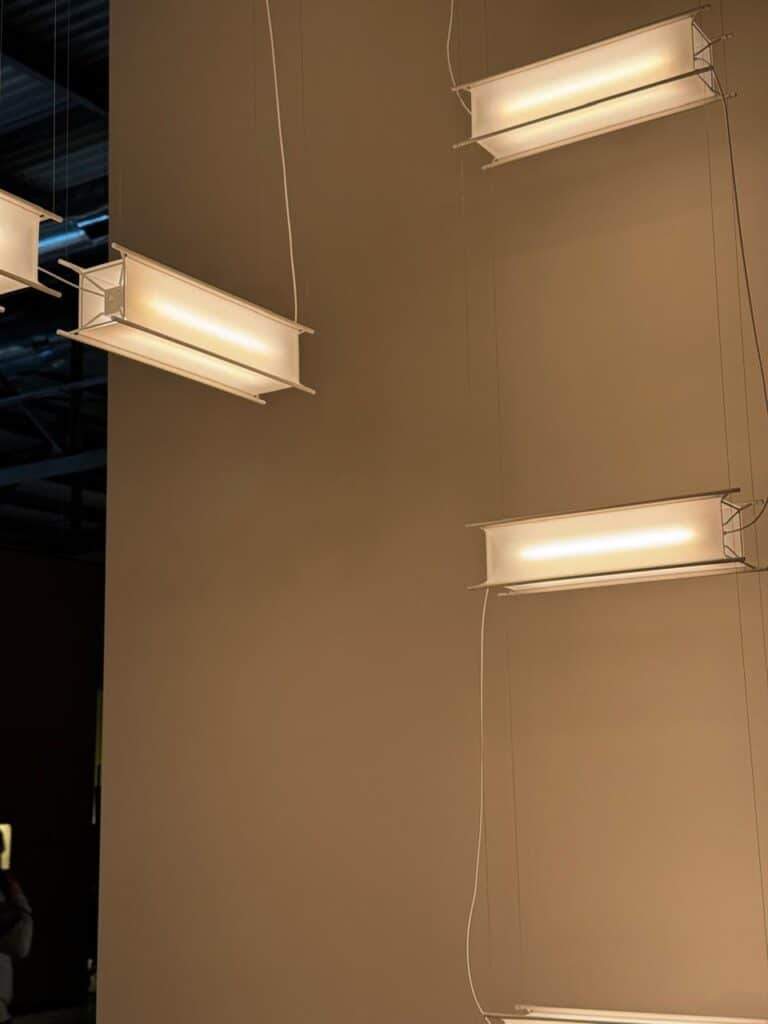
Salone del Mobile 2025 .. ..What the Numbers Say?
According to Salone del Mobile 2025 official figures, over 120 lighting-focused exhibitors participated this year, with 60% presenting updated energy-performance certifications.
An estimated 30+ talks and workshops were held in the Euroluce forum space, drawing over 5,000 visitors daily.
This quantitative shift suggests that lighting design is transitioning—from a sculptural add-on to a vital architectural layer deeply embedded in user experience, sustainability, and sensory health.

Final Thoughts
Salone del Mobile 2025 made it clear: the future of lighting isn’t about louder shapes or decorative excess. It’s about quiet revolutions—in materials, in technology, and in our relationship with light itself.
As we continue our coverage, ArchUp will spotlight standout projects, emerging material innovations, and how lighting design is quietly reshaping modern architecture.
